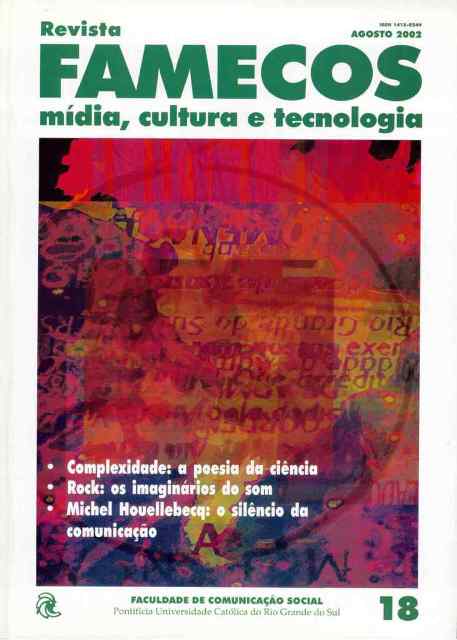Rock and imaginary: the imaging-sound relations in the present time
DOI:
https://doi.org/10.15448/1980-3729.2002.18.3166Keywords:
Communication, imaginary, rockAbstract
The present paper describes the intense relations between imagery and sound in contemporary age, focusing on rock as the music style of post-modern culture. It also shows that music is wrapped up in two important elements: technology and aesthetics. Technology implies a change in the way we listen to music and aesthetics links up musicians and their fans into a tribalization process, as concived by the French author Maffesoli. The main cha-racteristics of rock nʼroll (fluidity, mixing of styles and genres and so on) are also stressed, in order to point out that they belong to the post-modern way of life and that it is also a cultural product as much as it produces a culture that can be enjoyed and interpreted by contemporary society.
Downloads
References
BARTHES, Roland. O óbvio e o obtuso. Rio de Janeiro: Nova Fronteira, 1990.
BAUDRILLARD, Jean. A sociedade de consumo. Lisboa: Edições 70, 1995.
______. Tela Total: Mito-ironias da era do virtual e da imagem. Porto Alegre: Sulina, 1997.
CHESNEAUX, Jean. Modernidade-mundo. São Paulo: Vozes, 1995.
CONNOR, Steven. Postmodernist culture: Introduction to theories of the contemporary. Oxford: Blackwell Publishers, 1997.
DEBORD, Guy. A sociedade do espetáculo. Rio de Janeiro: Contraponto, 2000.
FEATHERSTONE, Mike. Cultura de consumo e pós-modernismo. São Paulo: Studio Nobel, 1994.
FINKIELKRAUT, Alain. A derrota do pensamento. Rio de Janeiro: Paz e Terra, 1989.
HOBSBAWM, Eric J. A era dos extremos: o breve século XX 1914-1991. São Paulo: Cia. Das Letras, 1995.
HARVEY, David. A condição pós-moderna. São Paulo: Loyola, 1992.
LÉVY, Pierre. As tecnologias da inteligência. São Paulo: Editora 34, 1993.
MAFFESOLI, Michel. A contemplação do mundo. Porto Alegre: Artes e Ofícios, 1995.
______. No fundo das aparências. Rio de Janeiro: Vozes, 1999.
MARTINS, Francisco M.; SILVA, Juremir M. (orgs.). Para navegar no século 21: tecnologias do imaginário e cibercultura. Porto Alegre: Sulina/Edipucrs, 1999.
MATTELART, Armand. A globalização da comunicação. São Paulo: EDUSC, 2000.
MORIN, Edgar. O Método. Volume 3: o conhecimento do conhecimento. Porto Alegre: Sulina, 1999.
NIETZSCHE, Friedrich. Além do bem e do mal: prelúdio a uma filosofia do futuro. São Paulo: Cia. das Letras, 1992.
______. O caso Wagner: um problema para músicos / Nietzsche contra Wagner: dossiê de um psicólogo. São Paulo: Cia. das Letras, 1999.
______. Crepúsculo dos ídolos. Rio de Janeiro: Relume Dumará, 2000.
RUSHDIE, Salman. O chão que ela pisa. São Paulo: Cia das Letras, 1999.
SFEZ, Lucien. As tecnologias do espírito. In: MARTINS, Francisco M.; SILVA, Juremir M. (orgs.). Para navegar no século 21: tecnologias do imaginário e cibercultura. Porto Alegre: Sulina/Edipucrs, 1999.
WISNIK, José Miguel. O som e o sentido: uma outra história das músicas. São Paulo: Companhia das Letras, 1999.
Downloads
Published
How to Cite
Issue
Section
License
Copyright
The submission of originals to Revista Famecos implies the transfer by the authors of the right for publication. Authors retain copyright and grant the journal right of first publication. If the authors wish to include the same data into another publication, they must cite Revista Famecos as the site of original publication.
Creative Commons License
Except where otherwise specified, material published in this journal is licensed under a Creative Commons Attribution 4.0 International license, which allows unrestricted use, distribution and reproduction in any medium, provided the original publication is correctly cited.






